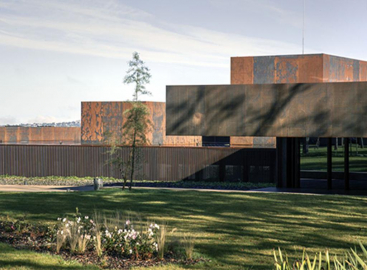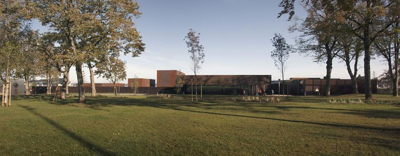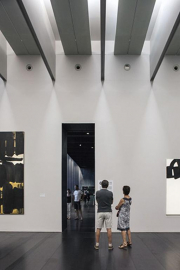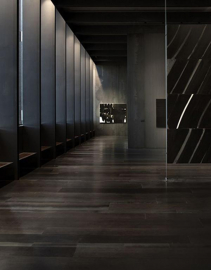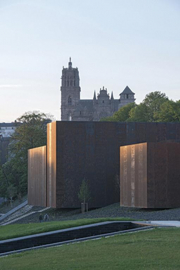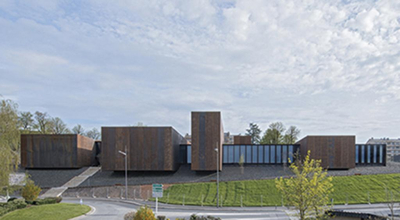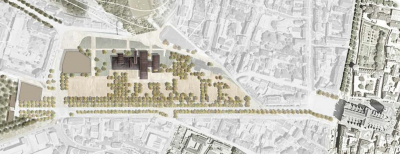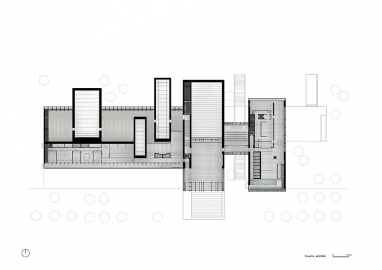Soulages Museum
The Project avoids any sort of banality or domestic anecdote and tends to an essential, pure and timeless architecture. It is not a search of form but one of materiality, where light and proportion tend to create a serene and intense place, a clear and sensitive architecture, where the spaces and the exposed works complement each other.
The brief contains a variety of exhibitions spaces in order to show the variety in formats and techniques from the painter about 1.500 m2 and a temporary exhibition hall about 500 m2. The entrance hall is about 300 m2. Offices with the documentation center and pedagogic workshops are about 400 m2. Cafe and Restaurant with an independent entrance is about 650 m2. And for founds and restoration spaces the surface is almost 650 m2. And toilets, circulations, and MEP rooms are also required.
The building occupies a site between the old city of Rodez with its cathedral constructed in reddish brown stone, and the modern extension to the west with its mostly undistinguished buildings constructed in recent decades. It takes the form of a series of parallel oblongs coated in rusty Corten steel with interstices between them allowing long views to the rugged landscape to the north and permitting outdoor public stairways between the upper and lower levels of the site. The pedestrian approach is across a park which occupies the old Foirail or cattle market, and from this the south side, the building appears to be long, horizontal and low. But from the other, north side, the Soulages Museum takes on vertical and monumental character for it juts out over a steep slope. Seen from below, the boxes containing some of the main galleries read almost as residual bastions, although there is a teasing dialogue between the sense of weight and the weightlessness of cantilevered steel volumes.
The apparently simple theme of parallel geometries reveals a degree of complexity as the different-sized volumes contribute to an array of shapes seen in perspective with the cathedral in the background. Steel and stone make a happy marriage on this occasion and of course the black and russet colours and stark abstract geometries make an apt home for the abstract paintings in similar colours by Pierre Soulages. By William Jr Curtis The building was thought from a point of view of passive protection from the heat. In the exterior it has an over-insulated skin that continues under the ventilated roof and combines with the use of argon glass. Mechanically speaking, the heat is recovered and during the construction, the criteria of green site was applied. In the interior, natural light is combined with low consummation artificial light.

